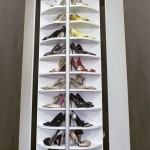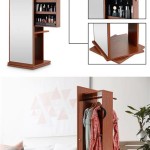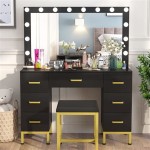Are Wall Mirrors Outdated?
The question of whether wall mirrors are outdated is complex. While their functionality remains relevant, design trends and evolving interior décor preferences influence their perceived modernity. Mirrors serve practical purposes, from checking appearances to enhancing natural light. However, their decorative role has been subject to changing styles, impacting their prevalence in contemporary interiors.
Functionality vs. Fashion
Mirrors offer undeniable functionality. They provide a quick way to check one's appearance and can significantly brighten a room by reflecting natural and artificial light. These practical benefits ensure their continued relevance regardless of passing trends. However, their aesthetic contribution is subject to the fluctuating nature of interior design fashion.
The Evolution of Mirror Styles
Over the decades, wall mirror styles have evolved considerably. From ornate gilded frames of the Victorian era to the minimalist, frameless designs popular in mid-century modern homes, mirrors have reflected prevailing aesthetic sensibilities. The heavy, elaborate styles of the past may appear dated in contemporary settings, while simpler designs often maintain a timeless appeal. This evolution highlights the importance of choosing mirror styles that align with current design preferences.
The Influence of Current Design Trends
Current interior design trends often dictate the perceived modernity of wall mirrors. Minimalist and Scandinavian aesthetics, which prioritize clean lines and open spaces, may favor understated, frameless mirrors or those with thin, metallic frames. Conversely, maximalist trends, embracing bold patterns and textures, could incorporate more ornate or uniquely shaped mirrors as statement pieces. Therefore, the perceived outdatedness of a mirror is heavily influenced by its alignment with current design sensibilities.
Alternatives and Competition
The emergence of alternative decorative elements has also impacted the prominence of wall mirrors. Large-scale artwork, textured wall panels, and decorative shelving now compete for wall space, sometimes replacing the traditional role of the mirror. This doesn't render mirrors obsolete but necessitates more thoughtful integration into the overall design scheme.
Size and Placement Considerations
The size and placement of wall mirrors play a crucial role in their perceived relevance. Overly large or improperly placed mirrors can overwhelm a space, appearing dated and out of proportion. Conversely, strategically placed mirrors, especially in smaller rooms, can create an illusion of spaciousness and enhance natural light, reinforcing their functional value. Careful consideration of size and placement is crucial for integrating mirrors effectively into contemporary interiors.
Material and Frame Choices
The materials used in the frame and the mirror itself contribute significantly to the overall aesthetic. Heavy, ornate frames can appear dated in modern settings, while sleek metal or natural wood frames often align better with contemporary preferences. Similarly, the type of glass used in the mirror can influence its appearance. Antique or distressed mirror finishes can contribute to a vintage aesthetic, while clear, modern glass aligns with minimalist trends. Choosing appropriate materials and frames that complement the overall interior style is essential for avoiding a dated look.
Beyond Purely Decorative: Functional Mirrors
Beyond purely decorative purposes, mirrors continue to hold practical value in specific applications. Full-length mirrors in bedrooms and dressing rooms remain essential for checking attire. Bathrooms benefit from mirrors for grooming purposes, often incorporating integrated lighting and storage solutions. In these instances, functionality takes precedence over decorative considerations, ensuring the continued relevance of wall mirrors regardless of broader design trends.
Mirrors as Architectural Elements
In contemporary design, mirrors are sometimes used as architectural elements, blurring the line between functional object and design feature. Mirrored walls or strategically placed panels can create a sense of expanded space, manipulate light, and add an unexpected dimension to a room. This innovative use of mirrors transcends passing trends, demonstrating their adaptability and enduring relevance in interior design.

Are Mirrored Walls Out Of Style Decoholic

Are Mirrored Walls Out Of Style Decoholic

Modernizing A Mirrored Wall Tape To The Rescue Average But Inspired

Modernizing A Mirrored Wall Tape To The Rescue Average But Inspired

Are Mirrored Walls Out Of Style Decoholic

Are Mirrored Walls Out Of Style Decoholic

10 Rooms With A Mirrored Wall Decoist

Are Mirrored Walls Out Of Style Decoholic

Mirrored Walls Antique Glass Ltd

Modernizing A Mirrored Wall Tape To The Rescue Average But Inspired








